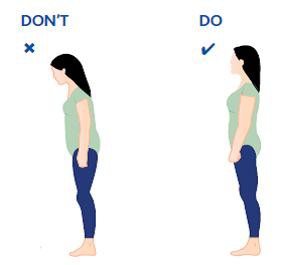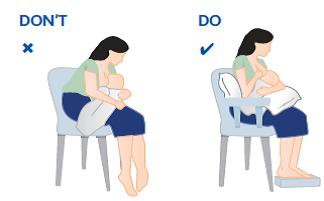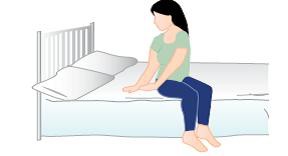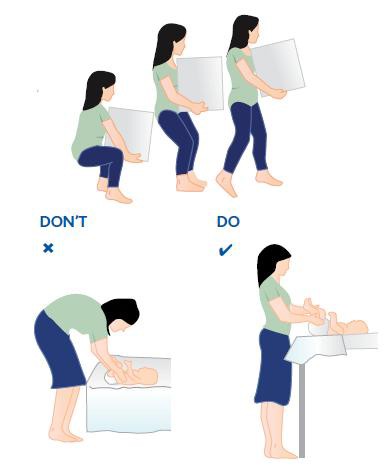Exercise overview
Ideally this information should be used in conjunction with instruction from a Chartered Physiotherapist in Women’s Health.
Looking after your back
Pregnancy results in gradual changes in the body, which do not return immediately to normal, but regular exercise will help you regain your strength.
It is common to develop low back pain, shoulder and upper spine tenderness and stiffness during and after pregnancy. This may be due to changing body shape, weakness of muscles, and increased demands placed on your body with the new arrival.
It can take up to five months for the ligaments to fully tighten up after the baby’s delivery, so adherence to good posture in all activities of daily living is vital. To help encourage correct muscle activation and reduced joint strain, try practising some of the following techniques:
Good Posture is important – sit, stand and walk tall.

When feeding the infant, it is advised to sit tall, preferably on an armchair, with arms and shoulders relaxed. A small footstool under the mothers feet, and a small roll at the small of their back, will ensure their back is well-supported.

When getting out of bed, they should bend both knees, press them together and roll over onto their side before sitting up. Reverse to lie down.

Avoid any unnecessary lifting and take smaller loads.
Avoid bending forward postures when caring for the infant as repeatedly doing this will cause wear and tear on the back. When lifting, always use your leg muscles to do the work.

Help us provide information most relevant to you
Please ensure your role and areas of interest are up to date.
